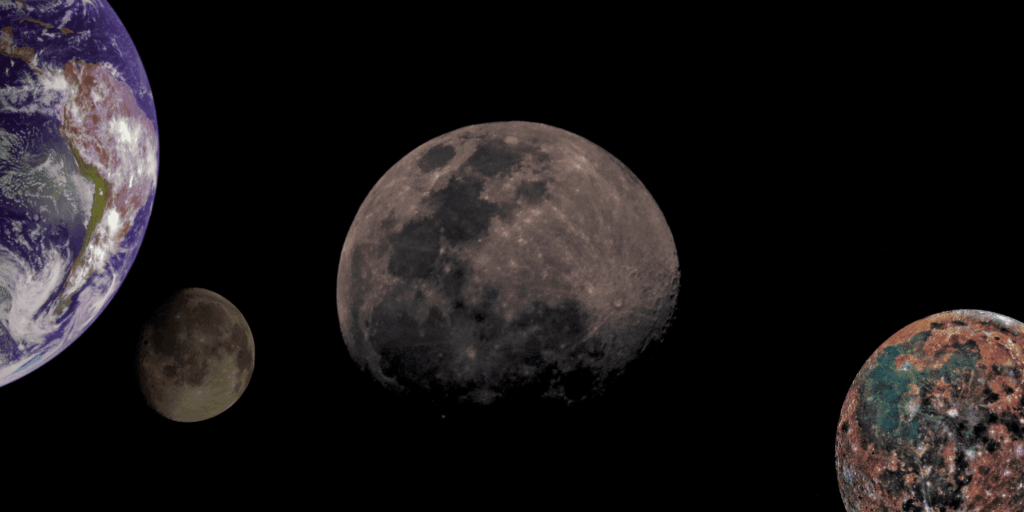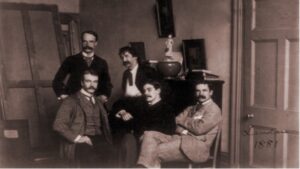Art and science are often seen as opposites—one driven by creativity, the other by logic. Yet, history reveals a deeper truth as these disciplines have always been intertwined. From Leonardo da Vinci’s anatomical sketches to modern data visualizations, art isn’t just an ornament to science—it has the potential to clarify, humanize and expand its impact. Here are a few ways that artistic expression can bridge gaps in scientific understanding.

Visualization Makes Complexity Accessible
Science often explores the invisible and the immense — from microscopic cells to cosmic phenomena and abstract equations. Art steps in to make these ideas graspable. Think of Galileo’s 17th-century ink sketches of the moon: more than just observations, they helped viewers see that the moon wasn’t smooth, grounding celestial theory in human perception.
Today’s tools — like molecular models, 3D visualizations, and games like Foldit — continue that tradition. By turning protein structures into interactive puzzles, Foldit invites anyone to contribute to real scientific discoveries. When art meets science, information becomes not just accessible — but engaging, intuitive, and even beautiful.
Metaphors Spark Conceptual Connections
Artistic metaphors help scientists—and the public—grasp unfamiliar ideas. When Watson and Crick described DNA’s structure as a “double helix,” they invoked a spiral staircase, a relatable image that anchored the concept in everyday experience. Similarly, the term “spacetime fabric” uses textile imagery to explain Einstein’s theory of relativity.
These metaphors aren’t just poetic flourishes. A 2019 study in Nature Communications found that analogies rooted in sensory experiences improve retention of scientific concepts by up to 40%. Artists excel at crafting such bridges. Bioartist Suzanne Anker, for instance, uses glass sculptures to represent cellular division, making mitosis visually and emotionally resonant.
Art Encourages Interdisciplinary Innovation
Many breakthroughs occur when scientists incorporate art practives into their work. The surrealist paintings of Salvador Dalí, inspired by quantum physics, influenced neurologist Eric Kandel’s research on memory. Kandel later won a Nobel Prize for uncovering how neurons store information—a discovery he credits to blending art’s fluidity with scientific rigor.
Even technical fields benefit. Engineers study origami to design foldable satellites, while mathematicians analyze Islamic geometric patterns to solve spatial puzzles. Art’s open-endedness pushes scientists to explore unconventional angles, literally and figuratively.
Emotional Engagement Drives Curiosity
Science can feel detached while art injects emotion into data. Consider the Blue Marble photograph of Earth taken during Apollo 17. This single image—a glowing sphere against black emptiness—ignited the environmental movement by evoking collective awe and vulnerability.
Similarly, climate scientists now collaborate with painters and filmmakers to depict melting glaciers or rising CO2 levels. Projects like Under the Skin (a virtual reality experience about ocean acidification) don’t just inform viewers—they make them feel the urgency of the data. Studies show emotionally charged content is 50% more likely to inspire action than purely factual reports.
Art Preserves Science’s Human Story
Behind every discovery are people—struggling, failing and persisting. Portraits, films and literature immortalize these narratives. Rosalind Franklin’s X-ray crystallography images of DNA were not just data points; they became symbols of her overlooked contributions. Plays like Photograph 51 later revived her story, highlighting gender bias in science.
Museums also blend artifacts with artistry. The Galileo Museum in Florence displays his telescopes alongside Renaissance art, contextualizing his work within the era’s cultural shifts. This humanizes science, reminding us it’s a collective endeavor shaped by curiosity and context.
Tackling Ethical Dilemmas Through Creativity
Science often raises ethical questions without clear answers. Art creates spaces to confront these dilemmas. Heather Dewey-Hagborg’s Stranger Visions project, where she sculpted faces from DNA found on discarded cigarettes, sparked debates about genetic privacy.
Such works don’t provide solutions—they prompt reflection. A 2023 report by the American Association for the Advancement of Science (AAAS) noted that sci-art collaborations increase public dialogue on topics like AI ethics and CRISPR, fostering more informed decision-making.
Art doesn’t replace scientific methods—it complements them. By visualizing the invisible, humanizing data and fostering empathy, art turns abstract theories into shared understanding. As physicist Werner Heisenberg once said, “The two cultures of science and art are really just different languages describing the same world.”
In an age of AI and quantum computing, this synergy matters more than ever. Whether through a painter’s brushstroke or a physicist’s equation, blending creativity with analysis helps us grasp not just how the world works—but why it matters.



